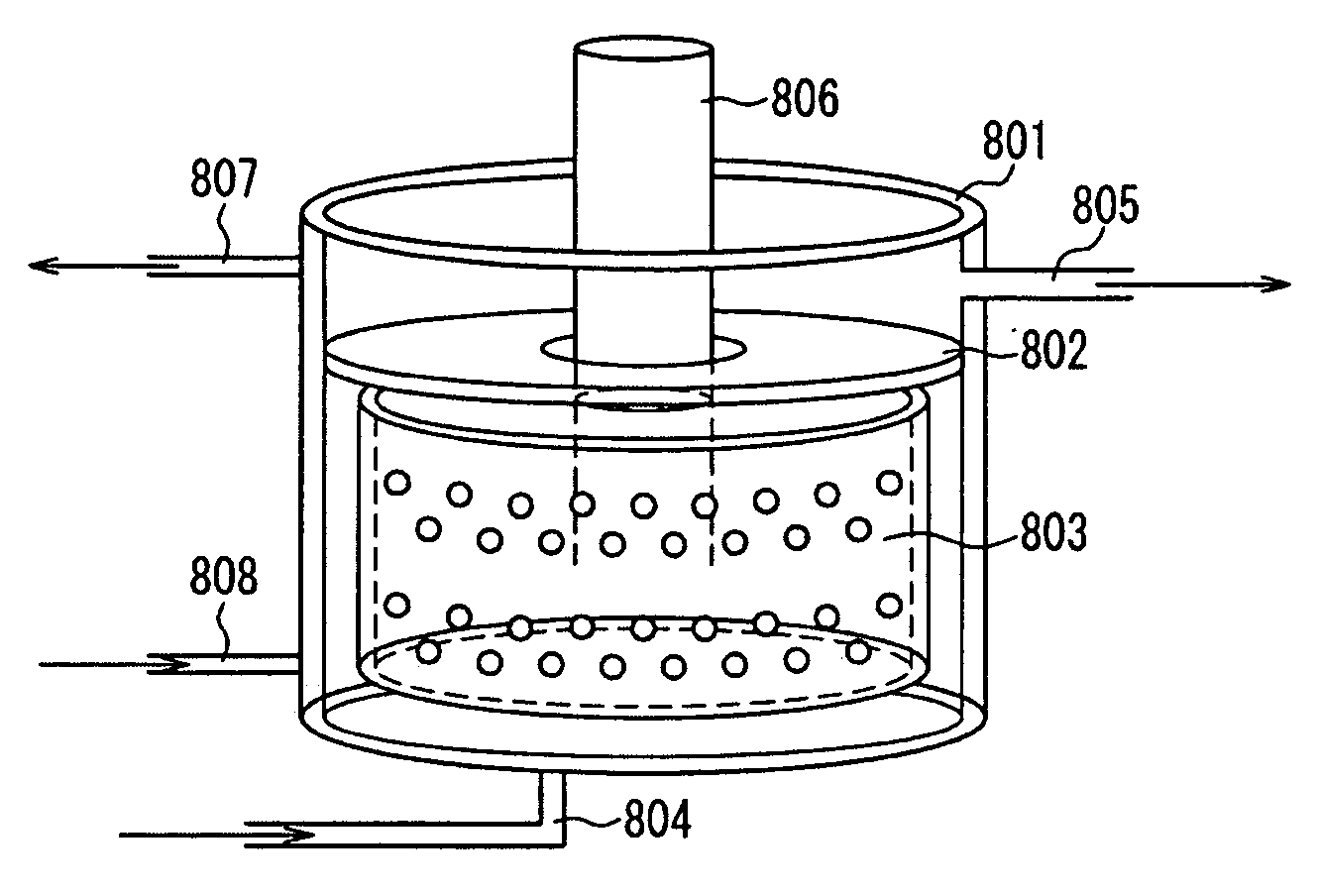Toner and process for producing the same
a technology of toner and process, applied in the field of toner, can solve the problems of poor color reproduction, complicated handling or configuration of equipment, and affecting the original color of toner pigmen
- Summary
- Abstract
- Description
- Claims
- Application Information
AI Technical Summary
Benefits of technology
Problems solved by technology
Method used
Image
Examples
example 1
Carrier Producing Example 1
[0311]Next, 250 g of polyorganosiloxane expressed as the following Chemical Formula (3) in which R1 and R2 are a methyl group, i.e., (CH3)2SiO2 / 2 unit is 15.4 mol % and the following Chemical Formula (4) in which R3 is a methyl group, i.e., CH3SiO3 / 2 unit is 84.6 mol % was allowed to react with 21 g of CF3CH2CH2Si(OCH3)3 to produce a fluorine modified silicone resin. Then, 100 g of the fluorine modified silicone resin (as represented in terms of solid content) and 10 g of aminosilane coupling agent (γ-aminopropyltriethoxysilane) were weighed out and dissolved in 300 cc of toluene solvent.
(where R1, R2, R3, and R4 are a methyl group, and m represents a mean degree of polymerization of 100)
(where R1, R2, R3, R4, R5, and R6 are a methyl group, and n represents a mean degree of polymerization of 80)
[0312]Using a dip and dry coater, 10 kg of the carrier core A was coated by stirring the resin coating solution for 20 minutes, and then was baked at 260° C. for 1 ...
example 2
Carrier Producing Example 2
[0314]A carrier B1 was produced in the same manner as the Carrier Producing Example 1 except that the carrier core B was used, and CF3CH2CH2Si(OCH3)3 was changed to C8F17CH2CH2Si(OCH3)3.
[0315]The carrier B1 was spherical particles including 88.4 mass % spherical magnetite particles and had an average particle size of 45 μm, a specific gravity of 3.56, a magnetization value of 65 Am2 / kg, a volume resistivity of 8×1010 Ωcm, and a specific surface area of 0.057 m2 / g.
example 3
Carrier Producing Example 3
[0316]A carrier C1 was produced in the same manner as the Carrier Producing Example 1 except that the carrier core C was used, and a conductive carbon (manufactured by Ketjenblack International Corporation EC) was dispersed in an amount of 5 wt % per the resin solid content by using a ball mill.
[0317]The carrier C1 was spherical particles including 92.5 mass % spherical magnetite particles and had an average particle size of 48 μm, a specific gravity of 3.98, a magnetization value of 69 Am2 / kg, a volume resistivity of 2×107 Ωcm, and a specific surface area of 0.043 m2 / g.
PUM
| Property | Measurement | Unit |
|---|---|---|
| melting point | aaaaa | aaaaa |
| pH | aaaaa | aaaaa |
| pH | aaaaa | aaaaa |
Abstract
Description
Claims
Application Information
 Login to View More
Login to View More - R&D
- Intellectual Property
- Life Sciences
- Materials
- Tech Scout
- Unparalleled Data Quality
- Higher Quality Content
- 60% Fewer Hallucinations
Browse by: Latest US Patents, China's latest patents, Technical Efficacy Thesaurus, Application Domain, Technology Topic, Popular Technical Reports.
© 2025 PatSnap. All rights reserved.Legal|Privacy policy|Modern Slavery Act Transparency Statement|Sitemap|About US| Contact US: help@patsnap.com



